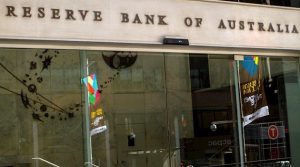One of Australia’s Most Hawkish Economists has Abandoned his Call for a RBA Rate Hike This Year

Of all the mainstream economists in Australia, few, if any, are as hawkish as Paul Bloxham, Chief Australia and New Zealand Economist at HSBC.
For several years he’s been forecasting for the Reserve Bank of Australia (RBA) to begin lifting interest rates only for economic data, and the RBA, to not oblige.
Following the release of Australia’s weak March quarter wage price index on Wednesday, revealing wage growth over the year was stagnant at just 2.1%, Bloxham has decided to push back the expected timing of the first RBA rate hike since late 2010 to the June quarter of 2019, later than his prior forecast for the December quarter this year.
“We have been surprised by how much additional spare capacity the labour market has had, which has pushed the participation rate to near record highs, and seen the unemployment rate broadly flat over the past nine months,” he said in a note released following the wage report,” he says.
“It has also been surprising how little of the boost to national incomes, largely from the rise in commodity prices over the past couple of years, has, thus far, got through to wage growth.
“Combining these weak wage outcomes, with very patient rhetoric from the RBA, and a bit more weakness in the housing market than we had been expecting and we are pushing back our call for the RBA’s first hike to Q2 2019.”
Bloxham, like other forecasters who have been forced to push back their rate hike calls, says there remains a great deal of uncertainty as to what exactly is leading to low wage growth in Australia.
“There are many possible explanations for why wages growth has been sluggish and little certainty as to which of these factors has been the most important,” he says.
“Some of the factors are structural and have also affected other markets, such as the combination of technology and globalisation, which may have reduced workers’ bargaining power, and weak productivity growth, which has been a global challenge.
“Other factors are cyclical and local, such as the slow fall of Australia’s unemployment rate and the big cycle in national incomes, which has been largely driven by commodity price moves.”
However, despite the uncertainty that still exists, Bloxham, like the RBA, still thinks the next move in official interest rates is likely to be higher.
“We still expect that the next move is up,” he says.
“We continue to expect that growth will pick up and eventually absorb enough spare capacity in the labour market to see a tangible lift in wage growth.”
Courtesy : businessinsider.com.au
Photo : FXStreet
[social_warfare buttons=”Facebook,Pinterest,LinkedIn,Twitter,Total”]



